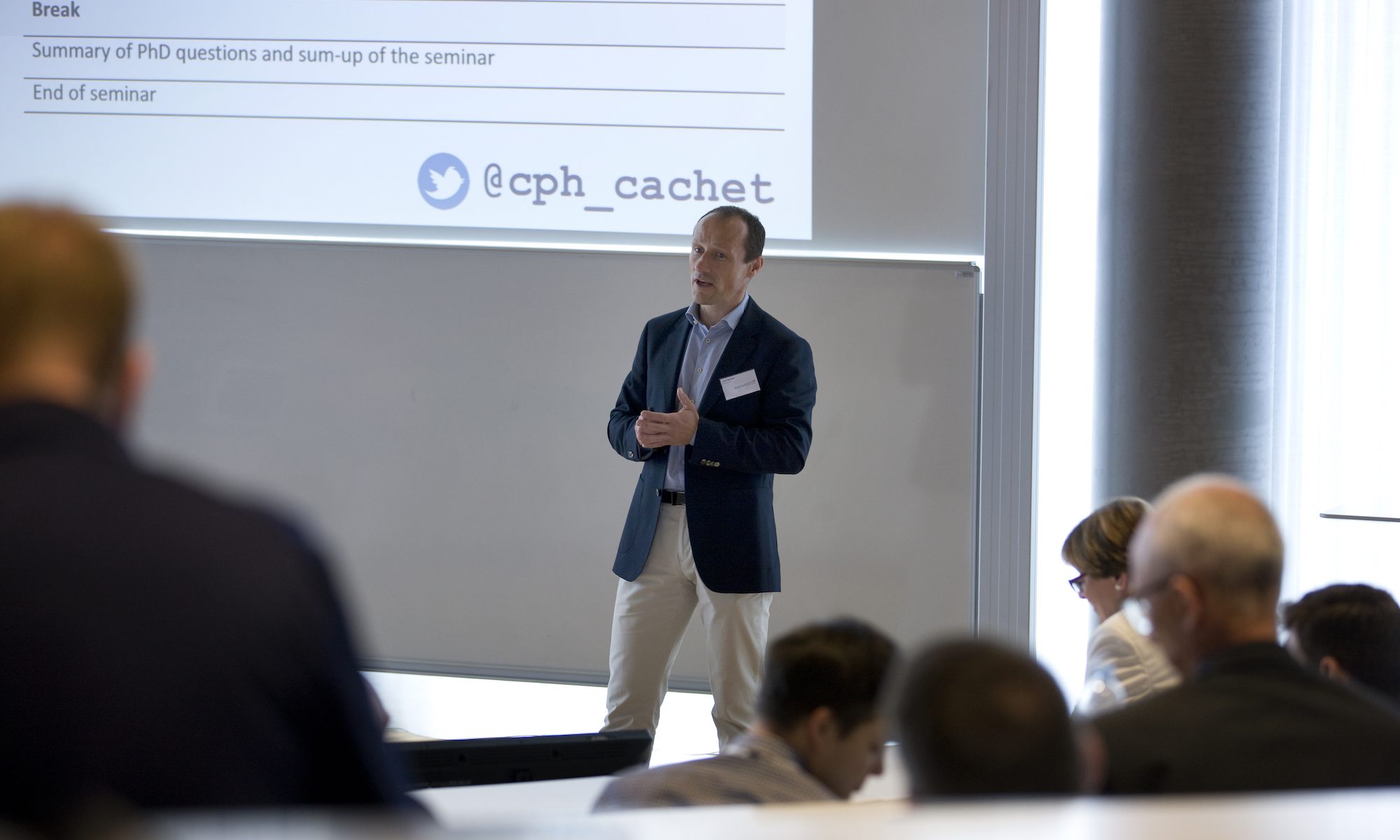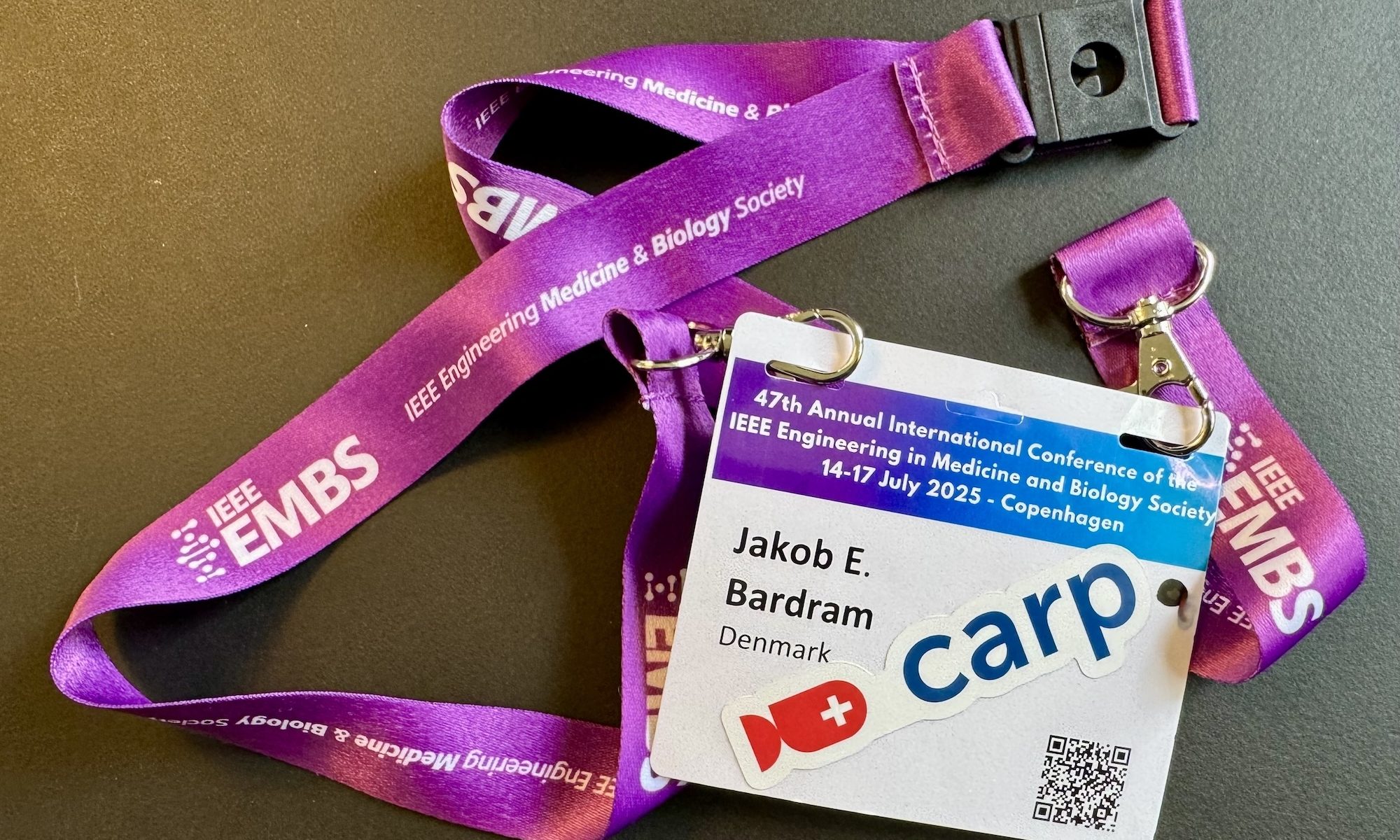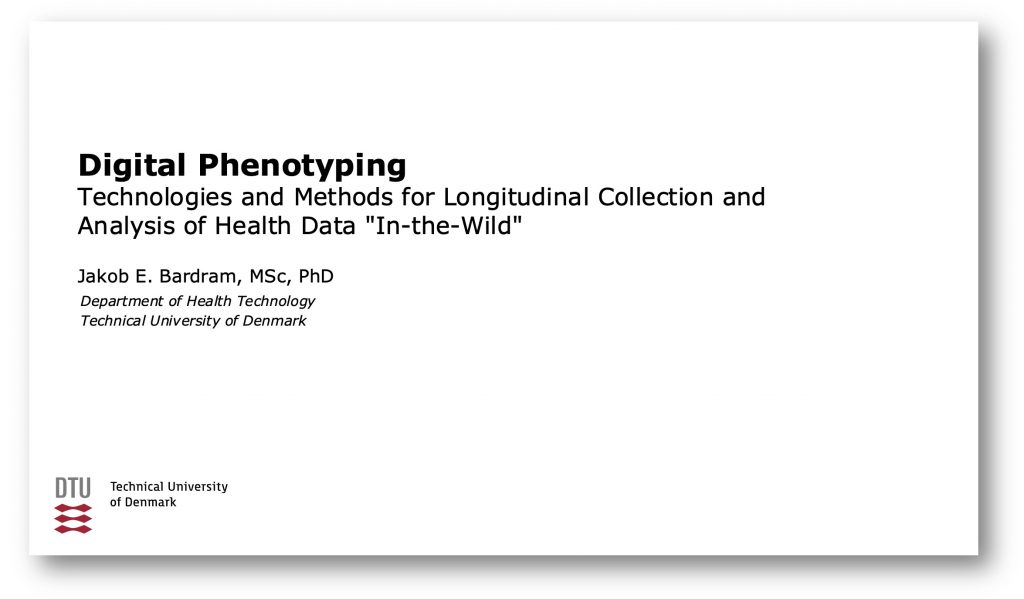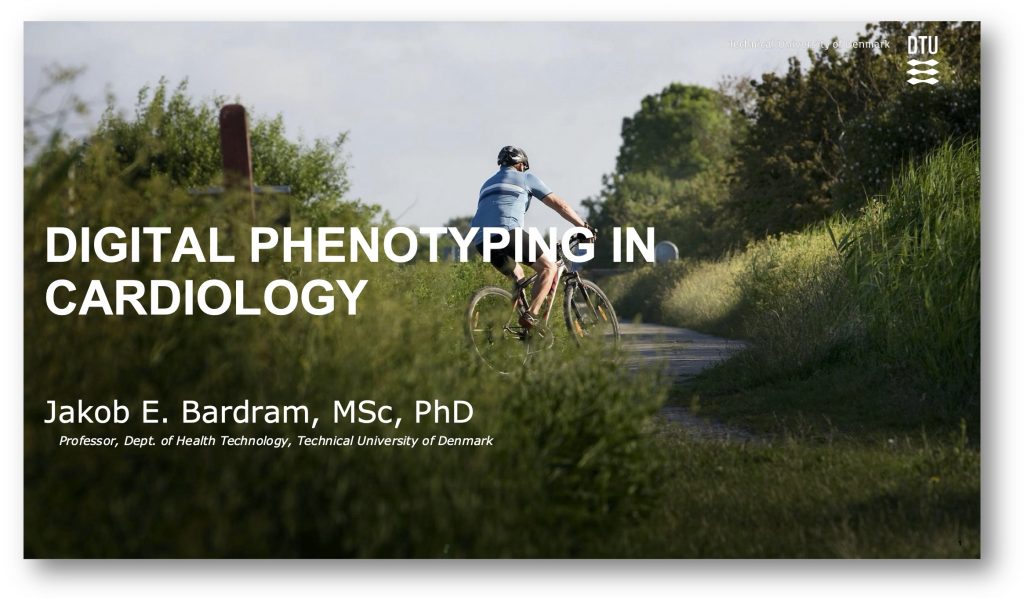This week, I had the pleasure of attending the IEEE Engineering in Medicine & Biology Conference (EMBC) 2025, which was held right here in Copenhagen. It’s always exciting when a major international conference comes to your home city—and this year’s EMBC was no exception.
Talks
At the conference, I had the opportunity to give two talks showcasing the work we’re doing on digital phenotyping, enabled by the Copenhagen Research Platform (CARP). The slides are available for download here.
This first talk was on the technologies we have developed as part of the Copenhagen Research Platform (CARP) and gave an overview of its components, the mobile & wearable sensing framework, and the cloud-based infrastructure.
As explained in the talk, CARP serves two purposes:
- It is a set of open-source and cross-platform (iOS & Android) software components for building mobile & wearable health applications in Flutter.
- It is a hosted infrastructure at DTU Computerome ready for clinicians and researchers in Denmark to use “out-of-the-box”.
If you are interested in using CARP – in either way – please do not hecitate to contact me or the CARP team at info@carp.dk.
This second talk was about the REAFEL project, explaining the clinical motivation behind the project (AFib detection done by GPs), the technical solution (mCardia), the data collected (the CACHET-CADB dataset), and the AI-based analysis of the data (the DeepAware model). You can read much more about this project on the REAFEL project page and access all the publications.
The conference was a great chance to present our recent advances in scalable mobile sensing for behavioral health and engage in meaningful discussions about how platforms like CARP can support large-scale digital health research.
Attending the rest of the conference…
Throughout the week, I attended a wide range of fascinating talks, particularly in the area of ambulatory, mobile, and wearable sensing for health applications. The field continues to evolve rapidly, and I came away with both inspiration and a long reading list of new ideas and techniques to explore. In particular, I attended talks on ambulatory sleep studies which is relevant to our SLEEPINESS study in Køge, several talk on sensing for Parkinson’s Disease which is relevant for our work in the BAT CAG, and of course talk on my favorite topic these year; ambulatory ECG monitoring in cardiology. Unfortunately, the biomedical engineers haven’t solve the problem of making a skin- or user-friendly ECG monitor, so there is still a lot of R&D to be done in this space.
Just as valuable as the technical content was the chance to reconnect with old friends and colleagues, and to meet new collaborators working at the intersection of computing, health, and clinical practice. These informal hallway conversations often spark some of the most important insights and future projects.
All in all, EMBC 2025 was a fantastic and energizing experience. A big thank you to the organizers and to everyone who attended my talks or stopped by for a chat. I’m looking forward to continuing the conversations and collaborations in the months ahead.



